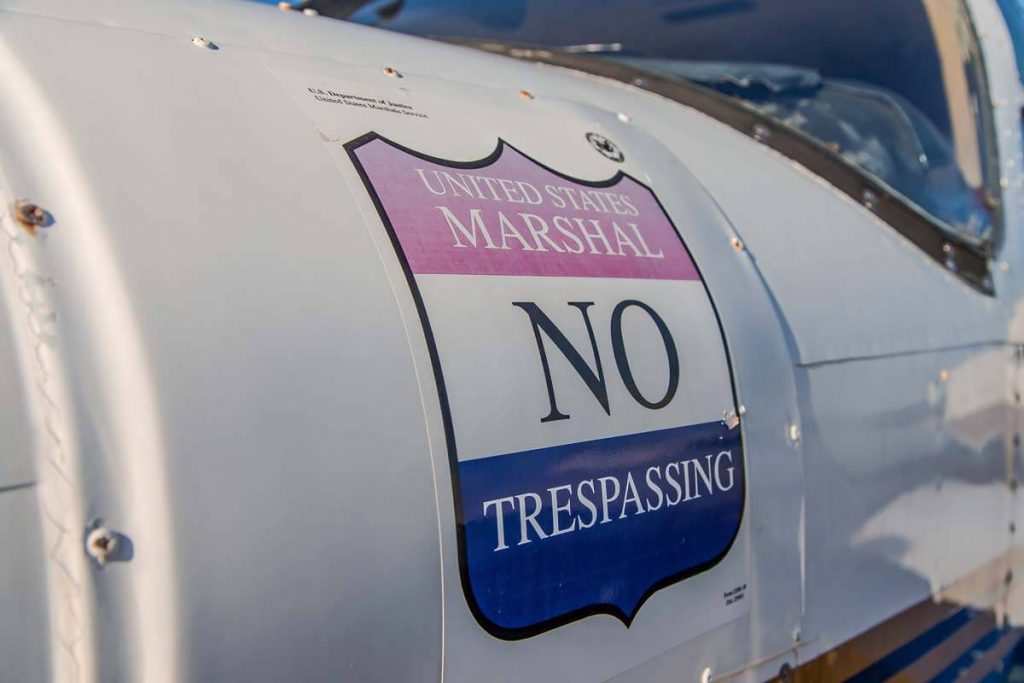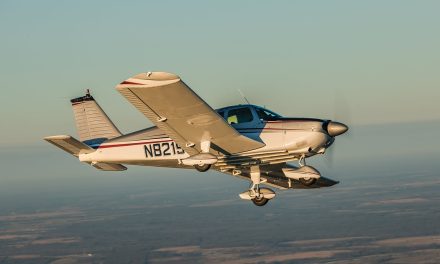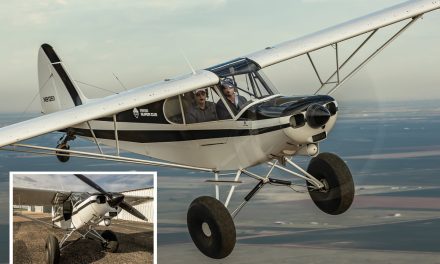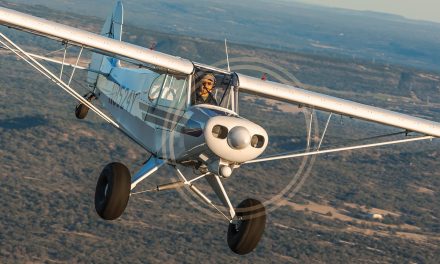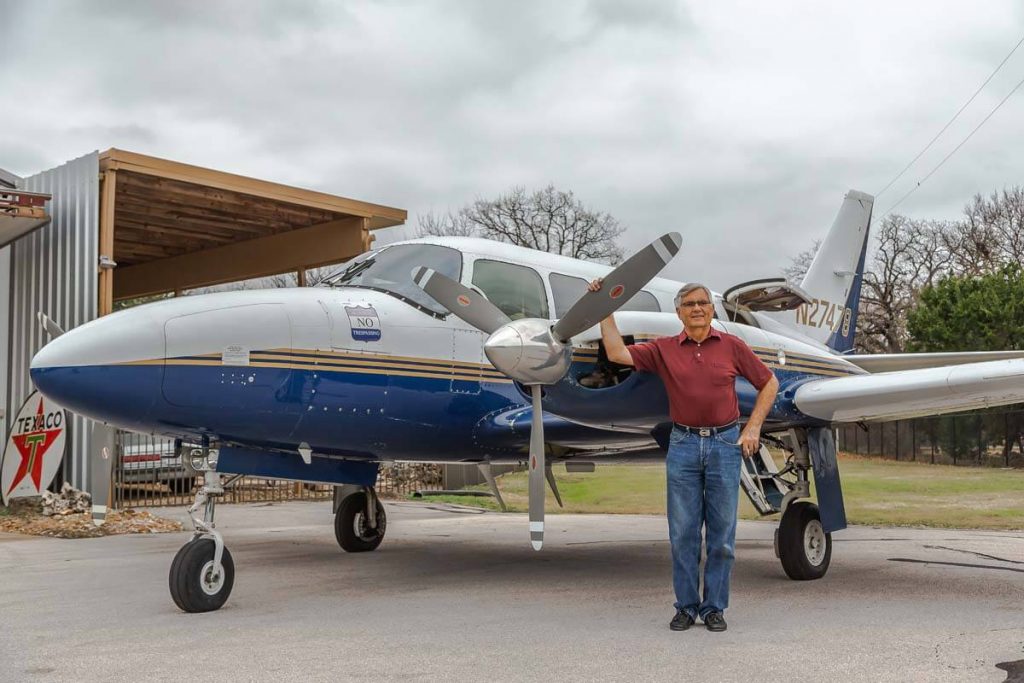
By Ronnie Hughes
Ronnie’s Navajo was the February 2020 cover plane.
I started my flying pursuits in 1977 earning my private pilot certificate in September of that year during my senior year in college. My first airplane was a 1/3 share of 1974 Grumman AA1B trainer. After a move to Austin, Texas, I bought a share in a Piper Cherokee 180 to get my instrument rating and that group later sold the Cherokee and purchased a Rockwell Commander 112B, which I used to get my commercial pilot certificate. After selling my share in the Commander, I purchased a Cessna 172 to work on my instructor certificate along with renting a 172RG for the complex airplane requirements. My first trip to Oshkosh for the annual convention was with a friend in an old Piper Apache. By then I had three kids and in order to travel by general aviation, I needed a five- or six-seat airplane. I rented an A36 for a little while until buying a 1964 Piper Aztec with the friend from the Oshkosh trip. He didn’t stay in the partnership long, and I found myself as the sole owner of the Aztec. My family and I traveled all over the U.S. in that airplane and came to understand the utility of an airplane with enough room and load-hauling capability. I owned the Aztec for 16 years.
The Aztec needed engine overhauls, major avionic upgrades, and paint work, so I decided to change airplanes rather than invest in the Aztec. The motivation for a cabin-class twin was driven by several factors including a desire for eight seats, sufficient useful load along with space for baggage to be able to make trips with our adult children and their families. My wife also wanted air conditioning and the space to move around during long trips. I considered Cessna 414 and 421 models along with the short body Navajos and Chieftains. While pressurization would be nice, I ultimately decided on the Navajo Chieftain because of my familiarity with Lycoming engines and the extra 24 inches in fuselage length that the Chieftain offered as compared to the PA-31-310 and PA-31-325 model Navajos.
This particular aircraft spent many years on a Part 135 certificate in south Florida before the operator replaced it with a Cessna Caravan. It was sold to an individual and thereafter seized by the FBI as part of a fraud case. That is the reason for the “United States Marshal No Trespassing” stickers on the fuselage. The aircraft was auctioned by the United States government, which is how I acquired it in August of 2014.
It was out of annual sitting on a ramp at William P. Hobby Airport in Houston, Texas, when I picked it up and flew it to Austin on a ferry permit. I was somewhat concerned about corrosion since the airplane was based in Fort Lauderdale, Florida, but Piper’s zinc chromate primer, along with frequency use, kept the airplane in good condition.
Little change has been made to the airplane since I acquired it. I replaced the carpeting and did an extensive cleaning of the leather seats. The Garmin GNS 530 was upgraded to a WAAS version and the GTX 330 transponder was upgraded to an ES version to provide ADS-B Out capability. Some repairs were required to correct communication problems caused by corroded antenna grounds and poor coax connections. The original Bendix FCS 810 autopilot system is still in place and working well. A DAC International GDC31 roll steering converter was added to allow the GPS to drive the autopilot. I investigated installing an Aspen PFD, but they are not able to interface with the flight director version of the FCS 810. At this point, my wish list is the Garmin G600 TXi system and GFC 600 autopilot, mainly because of increased reliability as compared to the old electro-mechanical gyros. The engine instrumentation is completely factory stock. It would be nice to add a graphical engine monitoring system, which would best be done by adding the engine monitoring option when upgrading to the Garmin G600 TXi.
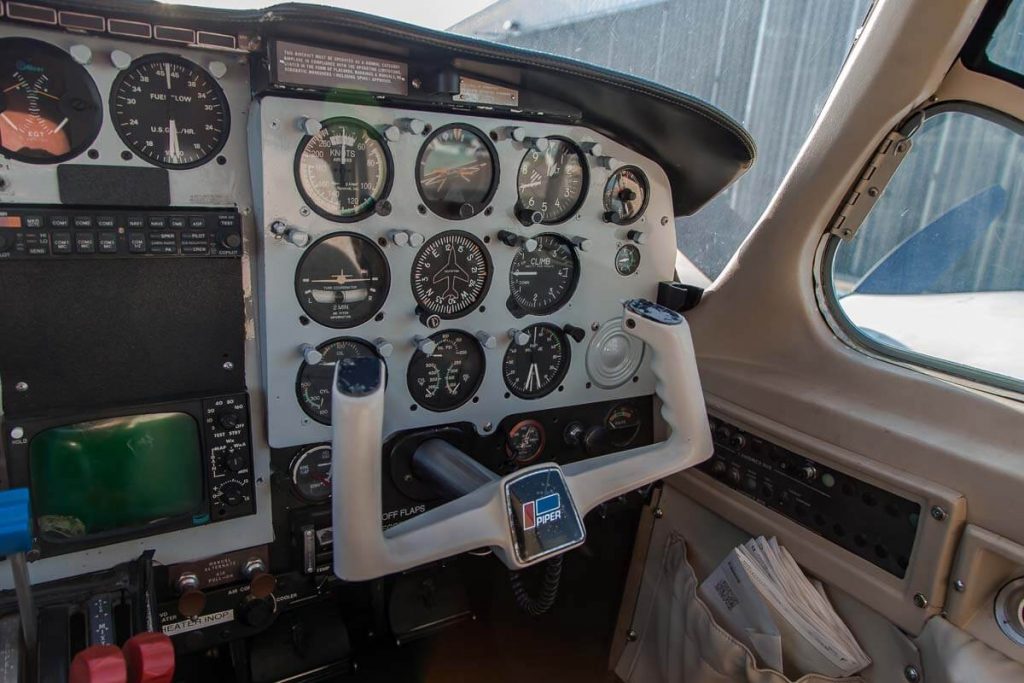
The original Bendix RDR 150 monochrome radar is seldom used, but has worked well when needed. It could be upgraded to color by replacing the indicator unit with an Avidyne EX500 or EX600 MFD. However, I prefer to use NEXRAD radar provided by a portable Stratus ADS-B receiver and avoid convective areas by a wide margin rather than trying to make tactical decisions based on the onboard radar with the limitations of its small antenna.
Read more about the Navajo in the February 2020 issue.
Because the airplane was based in southern Florida and operated from there into the Caribbean Islands, the 135 operator removed all the de-ice equipment to save weight and reduce maintenance costs. I briefly considered replacing the de-ice equipment, but most of my flying is in the south and I really don’t have a need for it. The heated windshield is inoperative and is very expensive to replace or overhaul, well above $20,000.
The vortex generator STC from Boundary Layer Research is installed, which lowers Vmc speeds essentially to stall speeds and increases gross takeoff weight to 7,368 pounds. I would highly recommend this STC to all Navajo owners. American Aviation, Inc. holds an STC for intercoolers, which improves performance and would be a nice addition. Griggs Aviation holds an STC for nacelle fuel tanks to increase the total fuel capacity to 246 gallons instead of the factory standard 192 gallons. These are the same tanks that were previously produced by Nayak Aviation.
The flap system in models prior to 1979 deserves special attention. A single electric motor drives each flap through a flexible cable to a transmission in each wing, which in turn is linked to the corresponding flap. A failure point is wearing out of the cable to motor spline connections, which can let one flap move while the other one doesn’t. This differential flap condition led to a fatal accident, which in turn led to an AD limiting flap deflection to 25 degrees on serial Nos. 31-7852171 and earlier. An electronic flap monitoring system was added on serial Nos. 31-7952001 and above and the flap deflection was restored to 40 degrees.
The Navajo production ended in 1984 and over the years there have been numerous ADs issued. A couple of newer ADs require repetitive inspections for cracks in fuselage bulkheads at stations FS317.75 (AD 2016-05-01) and FS332.00 (AD 2017-10-20). The installation of Piper-designed reinforcement kits is required if cracks are found and these may be installed at any time to terminate the repetitive ADs. A potential purchaser should check not only these, but all ADs carefully and verify compliance. Many Navajos were used in commercial service and have accumulated a large number of airframe hours. It is not uncommon to see them with over 15,000 to 20,000 hours. My airplane has more than 11,000 hours but had excellent maintenance while being operated under FAA Part 135. While many potential purchasers would shy away from such high times, as long as the airplane is well-maintained, it should not be a major concern. Since there are still many Navajos in commercial service, parts availability is good. I’ve had no issue with getting whatever I need to keep it flying.
An annual inspection requires about 40 to 60 man-hours plus the required maintenance and repairs. Total annual inspection bills have averaged just below $11,000 each year. The last annual was over $15,000 because of having to replace and rig the elevator pitch trim cable, overhaul the right alternator, and replace the battery. Thus far, the only failures between annuals have been one pneumatic pump, the shower-of-sparks starting vibrator, and most recently, the left side low pressure fuel boost pump. The starting vibrator failure resulted in not being able to start either engine. I now carry a spare unit in the airplane.
Insurance costs average about $3,100 per year based on a $160,000 hull value. So far, the underwriter has not required any particular training requirements for me beyond a standard flight review and annual IPC. I believe this is because of my total multiengine flight time along with the Navajo’s reputation of being a well-mannered light twin.
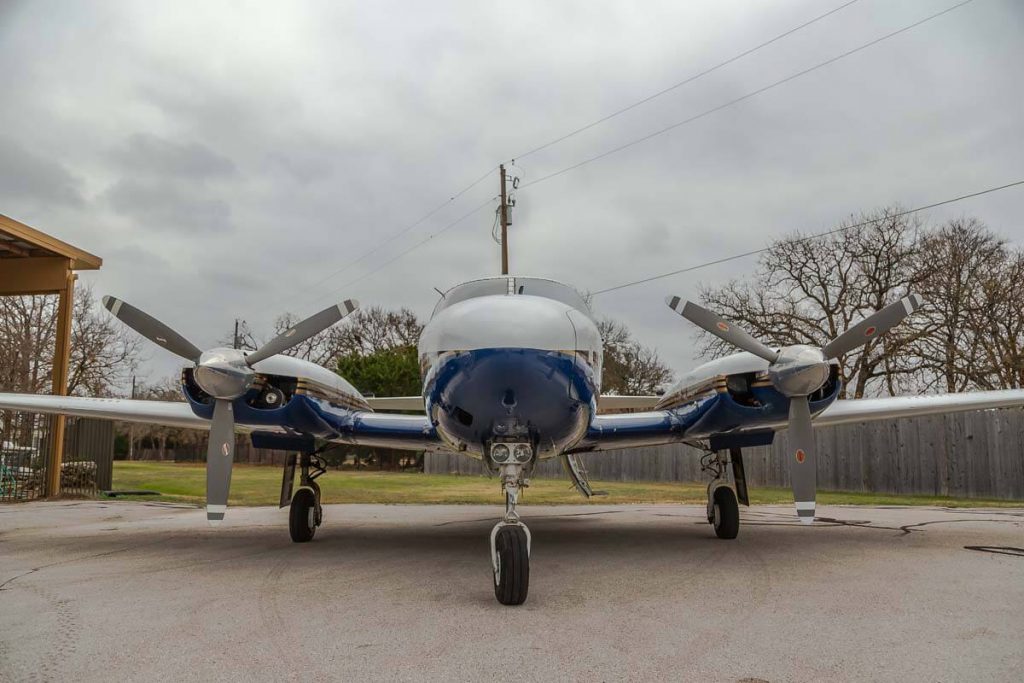
The engines are 350-hp turbocharged Lycomings: TIO-540-J2BD on the left and LTIO-540-J2BD on the right. The counter-rotating engines and props means there is no critical engine. The J2BD variant of the engine uses a dual Bendix mag that has two mags in a single housing with a single drive shaft. The J2B variant of the engine uses a more traditional pair of individual mags and can be installed via STC from Micro AeroDynamics or Mike Jones Aircraft. Speaking of Mike Jones, the Panther modification is popular with winglets and four-bladed props, but I like the look of the original three-bladed props better.
Red line on manifold pressure is 49 inches, but the automatic density controllers are adjusted to provide 44 inches under standard temperature and pressure conditions. At full power during takeoff, fuel flow gushes to above 70 gph but can be reduced to 54 gph at 85% power during climb while keeping EGTs below 1,500 degrees F and CHTs around 400 degrees F. At light weights, I reduce power further and still have outstanding climb performance. During cruise, I normally operate at 2300 rpm and 30-32 inches of manifold pressure, burn between 32 and 36 gph and see true airspeeds of 180 to 195 knots depending on altitude and weight. The Piper Approved Flight Manual allows for lean of peak operation and provides a procedure that limits the EGT (turbine inlet temperature) to 1,650 degrees F while leaning. I have operated 50 degrees lean of peak with fuel flows around 20 gph but the airspeeds fall off significantly.
There is plenty of baggage space distributed between the nose, nacelle wing lockers, and the rear fuselage baggage area. The nacelle wing lockers are very long and as such are ideal for skis, guns, fishing poles, and similar items. The airplane came with eight seats installed; the pilot and co-pilot, four in club seating arrangement, and two forward facing on the main seat rails ahead of the cabin door. The type certificate data sheet allows up to 10 seats to be installed but the ninth and tenth seats go into the rear baggage area. Piper offered a variety of options for forward and rear cabinetry, cabin dividers, folding map tables, and belted toilet seats with or without a vanity. Mine has the forward cabinets and dividers. I would like to add folding map tables but have been unable to find tables with the correct part number. The rear cargo door next to the air stair door provides a way to load bulky items. Piper also offered an optional pilot door, which my airplane does not have installed. The empty weight of my airplane is 4,832 pounds for a useful load of 2,536 pounds. With full fuel, the payload is 1,444 pounds. I use a spreadsheet to calculate weight and balance because of the loading options.
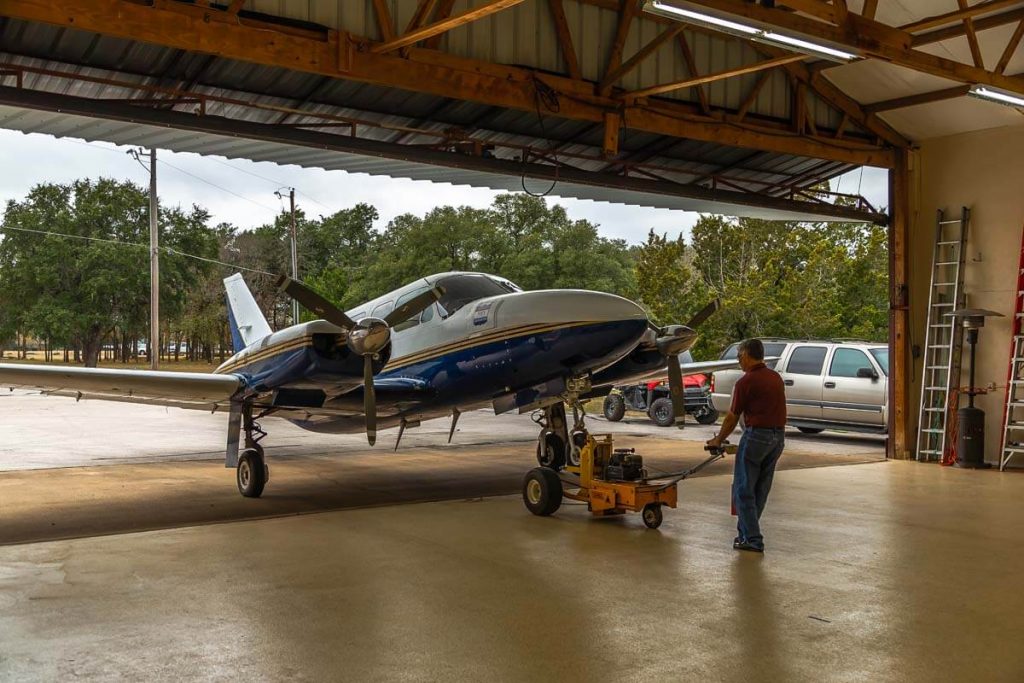
I live on an airpark northwest of Austin. My hangar is large enough for the Navajo, except the bi-fold door provides only 11 feet, 8 inches of vertical clearance when open. The Navajo’s tail is 13 feet tall. Therefore, I had to improvise a lifting tug to raise the nose, which lowers the tail sufficiently to get it under the door. There is plenty of clearance once in the hangar. I asked my wife what she liked the best about the airplane as compared to others and her response was, without hesitation, “Air conditioning!” I asked what one thing she’d like to change and she said, “A taller ceiling so I can stand-up fully.” Otherwise she loves the airplane and does not want to talk about selling it and moving to a smaller and/or single-engine airplane. If I could afford a Piper M600, TBM 930, or Pilatus PC-12, I’m sure she’d change her mind.

